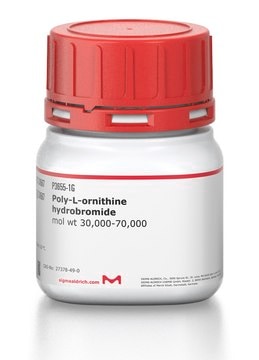ABN1358
Anti-C9ORF72/C9RANT (Poly-GP sense/antisense)
serum, from rabbit
Sinônimo(s):
C9ORF72/C9RANT (poly-GP), alpha-GP-sense/antisense
About This Item
Produtos recomendados
fonte biológica
rabbit
forma do anticorpo
serum
tipo de produto de anticorpo
primary antibodies
clone
polyclonal
reatividade de espécies
human
técnica(s)
immunocytochemistry: suitable
immunofluorescence: suitable
immunohistochemistry: suitable
western blot: suitable
nº de adesão NCBI
nº de adesão UniProt
Condições de expedição
ambient
modificação pós-traducional do alvo
unmodified
Informações sobre genes
human ... C9orf72(203228)
Descrição geral
Especificidade
Imunogênio
Aplicação
Immunocytochemistry Analysis: A 1:500 dilution from a representative lot detected C9ORF72/C9RANT (Poly-GP sense/antisense) in V5 -GP transfected HEK293. (Courtesy of Dr Laura P.W. Ranum and Dr. Lien Nguyen from the University of Florida).
Western Blotting Analysis: A representative lot detected C9ORF72/C9RANT (Poly-GP sense/antisense) in Western Blotting applications (Zu, T., et. al. (2013). Proc Natl Acad Sci USE. 110(51):E4968-77).
Immunohistochemistry Analysis: A representative lot detected C9ORF72/C9RANT (Poly-GP sense/antisense) in aggregates found in neurons of the CA and DG regions of the hippocampus (Zu, T., et. al. (2013). Proc Natl Acad Sci USE. 110(51):E4968-77).
Neuroscience
Qualidade
Western Blotting Analysis: A 1:1,000 dilution of this antibody detected C9ORF72/C9RANT (Poly-GP sense/antisense) in 10 µL lysate fromHEK293 cells transfected with Flag-GP construct.
Descrição-alvo
forma física
Armazenamento e estabilidade
Outras notas
Exoneração de responsabilidade
Não está encontrando o produto certo?
Experimente o nosso Ferramenta de seleção de produtos.
Código de classe de armazenamento
12 - Non Combustible Liquids
Classe de risco de água (WGK)
WGK 1
Certificados de análise (COA)
Busque Certificados de análise (COA) digitando o Número do Lote do produto. Os números de lote e remessa podem ser encontrados no rótulo de um produto após a palavra “Lot” ou “Batch”.
Já possui este produto?
Encontre a documentação dos produtos que você adquiriu recentemente na biblioteca de documentos.
Nossa equipe de cientistas tem experiência em todas as áreas de pesquisa, incluindo Life Sciences, ciência de materiais, síntese química, cromatografia, química analítica e muitas outras.
Entre em contato com a assistência técnica